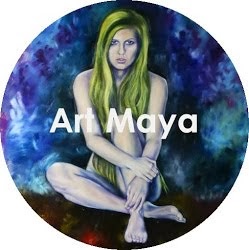

Generally, the user can set the input, and the input content includes detailed picture content that the user wants. This greatly reduces the threshold of painting and challenges the traditional definition of painting art. And some artists can use image generators to generate their paintings instead of drawing from scratch, and then they use the generated paintings as a basis to improve them and finally create new digital paintings. Anyone can turn their language into a painting through a picture generator. The essential idea of image generators is that people can use text descriptions to let AI convert their text into visual picture content. It can be used to generate pictures that have visual effects similar to traditional fine art. It is usually used to let the computer find the best solution by itself. Since their design in 2014, some artists have created artwork using a generative adversarial network (GAN), which is a machine learning framework that allows two "algorithms" to compete with each other and iterate. ( October 2022) ( Learn how and when to remove this template message)Īrtists have used artificial intelligence to create artwork since at least the 1960s. Please try to keep recent events in historical perspective and add more content related to non-recent events. This article or section appears to be slanted towards recent events. Fractal art, Datamoshing, algorithmic art, and real-time generative art are examples.Ĭomputer-generated 3D still imagery This can be considered the native art form of the computer, and an introduction to the history of which is available in an interview with computer art pioneer Frieder Nake. A possible third paradigm is to generate art in 2D or 3D entirely through the execution of algorithms coded into computer programs. Typically 2D computer graphics use raster graphics as their primary means of source data representations, whereas 3D computer graphics use vector graphics in the creation of immersive virtual reality installations. The second kind is 3D computer graphics, where the screen becomes a window into a virtual environment, where you arrange objects to be "photographed" by the computer. What is generated on your screen might appear to be drawn with a pencil, pen, or paintbrush. In this case, however, the image is on the computer screen, and the instrument you draw with might be a tablet stylus or a mouse. The simplest is 2D computer graphics which reflect how you might draw using a pencil and a piece of paper. Terragen has been used in creating CGI for movies.ĭigital visual art consists of either 2D visual information displayed on an electronic visual display or information mathematically translated into 3D information viewed through perspective projection on an electronic visual display. A procedurally generated photorealistic landscape was created with Terragen.


 0 kommentar(er)
0 kommentar(er)
